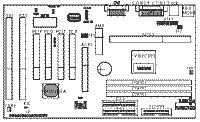|
Avviso
Tutti i marchi citati nel
presente archivio appartengono ai rispettivi proprietari.
Tutta la documentazione presente in questo archivio Ŕ
destinata ad un uso privato e non commerciale.
ATTENZIONE
Tutte
le informazioni di seguito riportate sono da ritenersi NON
VERIFICATE : l'autore del presente
archivio NON si assume alcuna responsabilitÓ per danni
derivanti direttamente o indirettamente dall'uso delle
suddette informazioni
Chiunque decida di usare qualunque risorsa (informazioni,
programmi, bios, etc..) presente in questo archivio , lo
fa sotto la sua personale responsabilitÓ !!
|
6VA693 |
Disclaimer
All trademarks used in
this private archive are the property of their respective
owners.
All documentation in this archive is for private and non-commercial
use.
WARNING
ALL
INFORMATION ARE UNTESTED, FLASH AT YOUR RISK!!
I'm NOT RESPONSIBLE for MISTAKES in this archive: BE
CAREFUL!!
|
